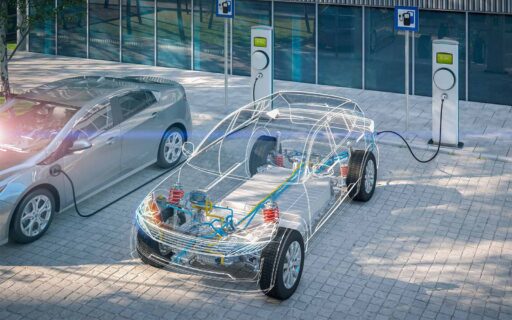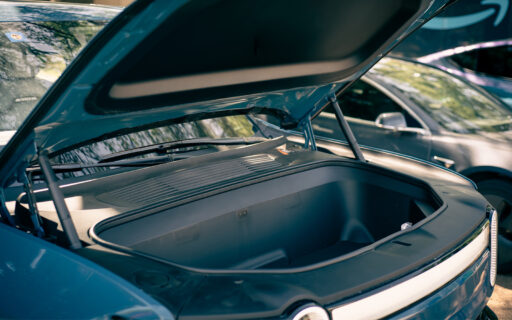Knauf Automotive
Car equipment and construction
From design to implementation: building and equipping cars
The body, covers, bumpers, wheel arches, dashboard – these are just a few of the important parts of the vehicle’s construction. What does the construction of a car look like? What parts are necessary for driving and what are they made of? In this article you will learn the most important information on this subject.
Latest articles
Car equipment and construction
What are the components of a car construction?
Car construction involves a number of parts that ensure proper performance and comfort. What is worth knowing about it?
Dashboard
Car construction is quite complex, making it difficult to accurately describe every component that makes up the whole vehicle. However, it is worth mentioning a few important components that have a decisive impact on driving conditions. One of them is the dashboard, or cockpit – this is an elaborate “command center” that allows the driver to control many systems, such as air conditioning, heating and lights. In addition, airbags and other safety features can be found here. The dashboard is also the place for icons and symbols indicating the current status of the car and its systems, as well as the car radio. Nowadays, the cockpit very often includes displays that serve as a multimedia center and the main access point for detailed settings of the car’s systems. Depending on the model, the equipment of the dashboard can vary, as can its design – but it is always the basic building block of the car.
Main car components
The design of a car includes many important systems, such as suspension, braking, steering, drive, exhaust, cooling and lighting. All of them consist of numerous components, each of which performs a specific function. They are quite complex structures – when designing them, it is necessary to take into account the requirements not only for driving itself, but also for safety and operating comfort. Most systems are controlled from the dashboard.
Car body
One of the most important components of a vehicle is also the body of the car. It’s basically a set of various parts that serve as a place to mount, as well as to secure other components. The body consists of the supporting structure, bodywork, hull, trimmings and equipment. The various parts of the body are currently prepared mainly from high-quality plastics, as well as steel and aluminum sheets. It is important that the materials used are resistant to temperature changes, shocks and other factors, since the body is constantly exposed to external conditions. Synthetic plastics work well in this field not only because of their high strength, but also because of their low weight, which helps reduce the overall weight of the vehicle.
In addition, body parts include the bumper, fenders, supports, lights, mirrors or covers (such as the engine or radiator cover). Another important part is the bumper absorber, which is designed to absorb energy in the event of a collision.
Car chassis
The chassis of the car is the main load-bearing element for the vehicle frame. Its task is also to connect the various components of the structure to each other and provide them with a secure position on the horizontal part of the vehicle. Thus, it is a complete set of components that ensures the ability to transfer power to the wheels. This is where the main parts of many systems critical to the operation of the vehicle are assembled – these include the braking, steering and drive systems, as well as the suspension.
Engine and engine cover
Car construction and operating principle cannot be complete without an engine, that is, a machine that converts the energy supplied to the vehicle into mechanical energy. Depending on the type of propulsion system, the energy source can be gasoline, diesel, electricity and sometimes even hydrogen. The generation of mechanical energy allows the car to be put into motion. In the case of internal combustion drives, this process takes place in four stages – there is a distinction between the suction, compression, combustion and exhaust phases.
In order for a car’s structure to effectively support stable propulsion operation, a proper engine cover is also needed. This is another component that relies primarily on plastics. The cover has several functions – first of all, it reduces the noise level inside the vehicle, in addition to supporting the aerodynamics of the chassis and creating thermal insulation. Moreover, it provides protection against potential damage to the drive.
Wheels and wheel arches
Any vehicle platform must also consider wheels and wheel arches. The shape of the wheels means that even heavy machinery can move efficiently on the road once enough power is supplied to the engine. It is worth bearing in mind that the wheels (or, to be more precise, tires) are in direct, running contact with the ground, making them crucial in terms of safety. The wheel arches, on the other hand, are mainly responsible for sound insulation, that is, reducing the noise level inside the vehicle. They also protect other chassis components from water, mud and various types of contaminants, such as chemicals or stones. A popular solution in the production of wheel arches is the use of lightweight injection-molded plastics, which allow a combination of strength, safety and freedom of design.
Car construction tailored to the needs of drivers
Car construction must take into account, first and foremost, the use of the proper materials. Lightweight plastics have many advantages – materials of this type provide both high resistance to external factors and low weight, which translates into greener production and driving. At Knauf Industries within our automotive division we specialize in the production of EPP and EPS components as well as injection-molded components. Our offer is precisely tailored to the needs of auto manufacturers. We manufacture exterior and interior components, EPP car seats, sun visors and battery packs, among other things – all Knauf solutions are created using the latest technology, which translates into the best performance for automotive companies.


